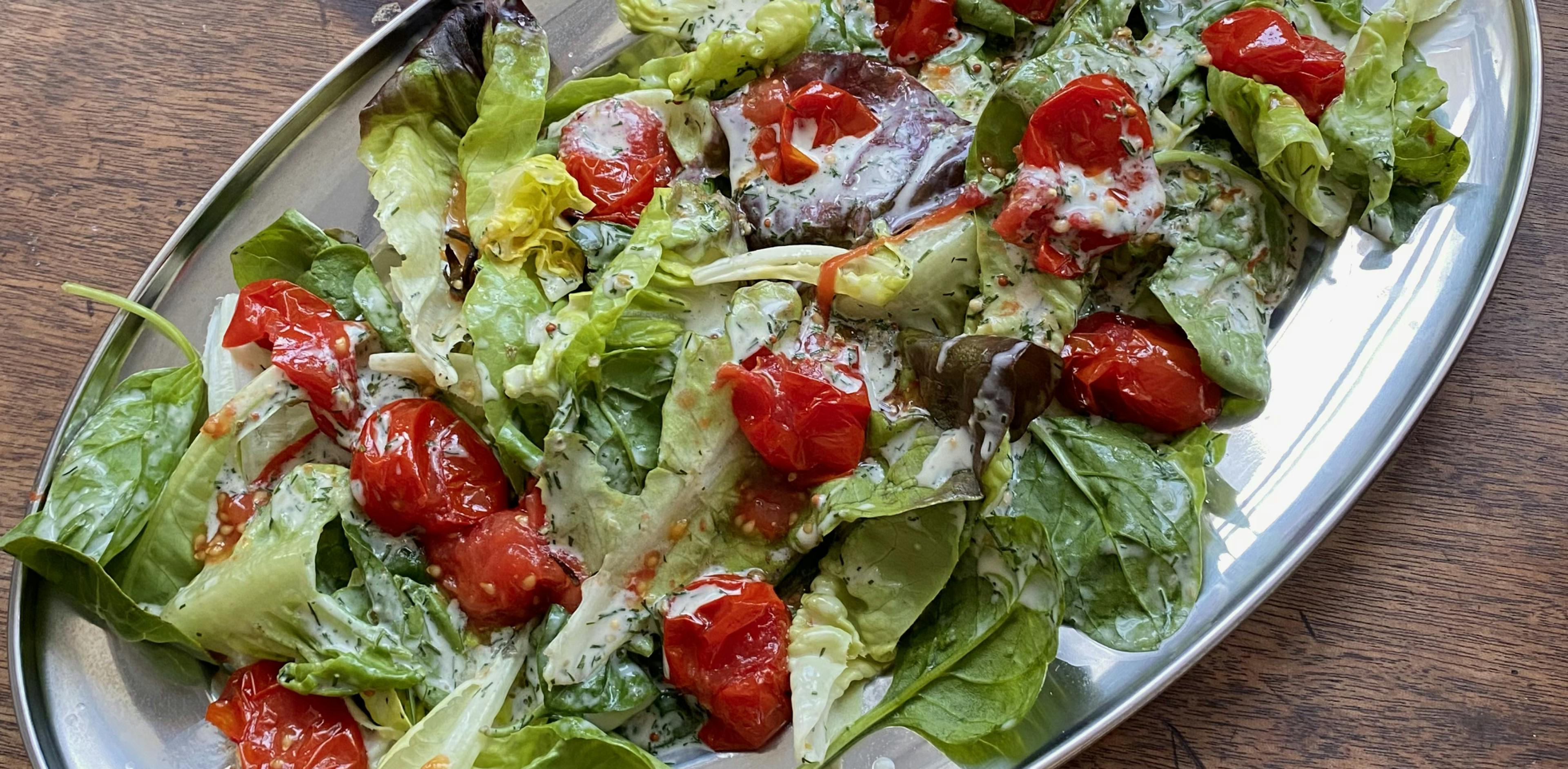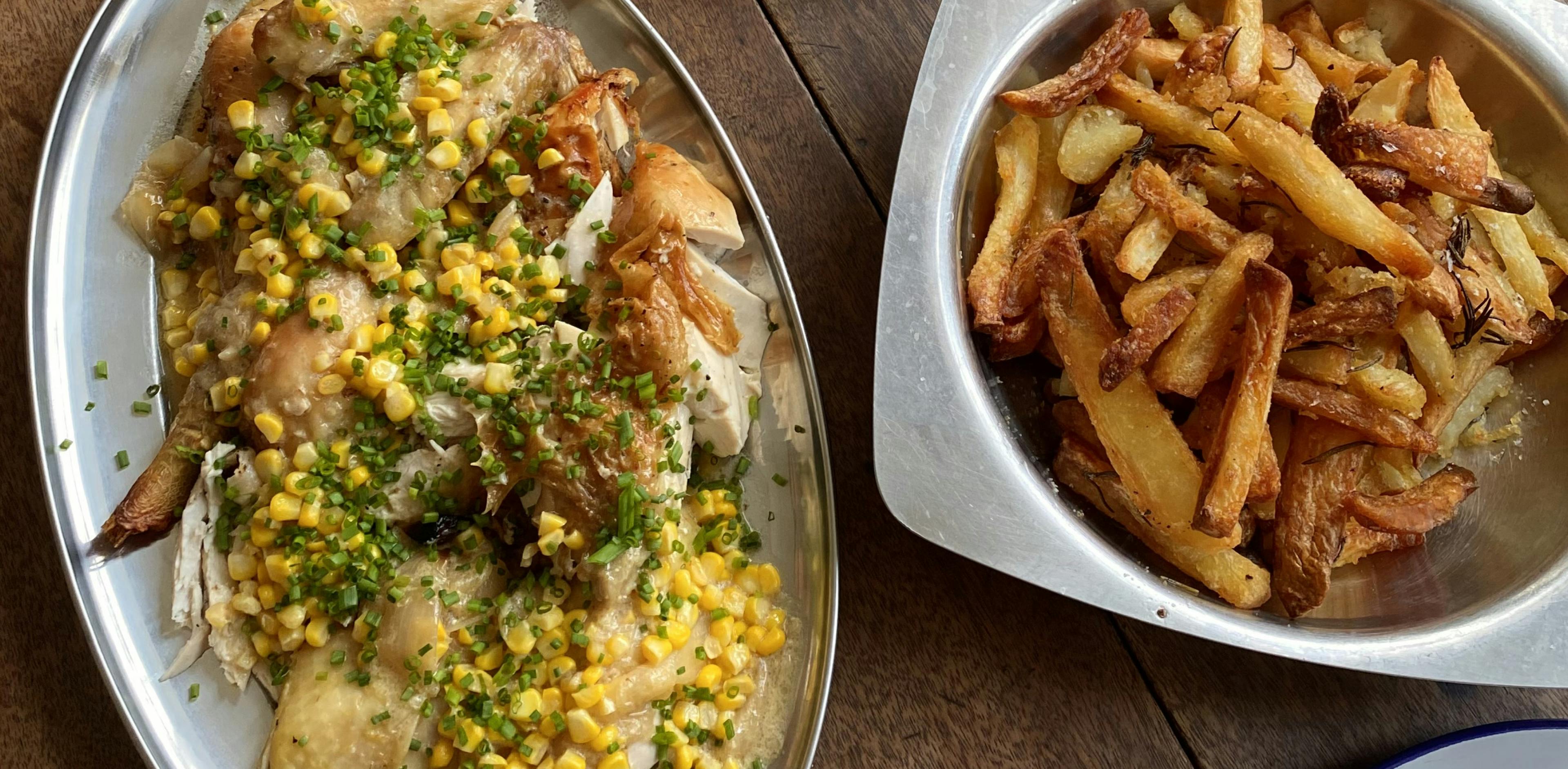

How To Cook For a Crowd
As we come towards the beginning of the festive period, we chat to Kelly of Kelly’s London, a cook who thrives on the joy of cooking for a crowd. From her early memories of family dinners to her tried-and-tested two-day prep rule, Kelly shares her approach to hosting with calm, care, and a touch of ease. She reminds us that a great feast doesn’t need to be complicated - just thoughtful, generous, and rooted in pleasure. Whether you’re cooking for four or forty, her philosophy proves that the best gatherings are built on warmth, planning, and good food shared well.


I get a burst of excitement when I cook for a large group. There’s something special about the scale: the prep lists, ingredient planning, table setting, and that final moment of serving.
I love cooking for smaller groups too. Wednesday dinners for four girlfriends or a quiet solo meal are some of my favourites, but a feast feels different. It’s festive and generous in a way that smaller meals rarely are.
Part of that joy is rooted in memory. I grew up watching my mum cook for ten people every night. The rule in our house was that I had to clear the dining table of my homework before dinner was served, pencil shavings and all. From my seat, I could see her at the stove, calmly managing three or four pots at once. She made it look effortless and I think of her every time I have four pans on the go too.
Planning the meal:
For me, the feast begins long before food hits the table. I love the planning stage just as much as the cooking. A few days out, usually after breakfast, I sit down with my laptop open and the Notes app ready to map everything out – the menu, the prep timeline, even the mood. Will we eat indoors or outside? Is this a long, lazy lunch or something candlelit and cosy? Whether it’s a job for work or just for pleasure, I try to host with structure and care. Guests feel most at ease when you do, when you can offer a drink, take their coats, and not have to worry about if something is burning on the stove.
Last week I cooked for ten friends: roast chicken, rosemary roasted potatoes, a tomato and aioli salad, and a lemon-and-vanilla whipped cream cake. Two weeks before, I made the same meal for forty. Next week, I’ll cook it for four. The process barely changes, just the scale. That’s what I love about a well-planned menu: it adapts. Once you’ve done it a few times, you start to see how a simple menu like this can stretch, scale, and still feel special, whether you’re feeding four or forty.
Building the menu:
I cook family-style because that’s my favourite way to eat. I think back to childhood meals: my mum or dad would serve a rich beef broth to start, followed by schnitzels, potato salad, pickled cucumbers, plates that felt endless. I want guests to feel the same sense of abundance. No one should hesitate to take seconds. In fact, I often insist on it.
To start, I love something simple: warm bread with good olive oil or butter with a good cured meat. I make sure the menu isn’t overly dependent on one piece of equipment. If everything needs the oven at once, I get stressed. It reminds me of cooking a roast on Christmas Day with only one oven, timings get chaotic, something gets overcooked, and something else ends up cold.
There are a few things I always consider when I’m planning what to cook: allergies, seasonality, weather, and what I actually want to eat. Allergies come first, because there’s nothing more frustrating than creating a menu to realise you need to change it. Seasonality matters too, food tastes better when it’s in season, it’s cheaper and better for the environment. The weather plays a big part. Cook for the weather you have, not want. Lastly, I only cook food I like to eat. Because if I’m not excited about the menu, I won’t enjoy cooking it, and if I’m not enjoying myself, there's no point for me.
I keep a mental (and digital) library of ideas and half-scribbled recipes that excite me. One part of the inspiration for this menu came from Kitty Coles. I had seen her roast a chicken and coat it with a sauce made of creme fraiche and corn. I instantly thought about it but without creme fraiche and with a chicken butter sauce. My dream plate. I knew I wanted that to be the base as my favourite food as a child was buttered corn on the cob.
If I’m cooking chicken for more than four people, I always opt for chicken legs rather than whole chickens. I can easily fit 10+ chicken legs in the oven, but I can’t say the same for three chickens. My go-to rule: one whole chicken serves four, no more. Legs are easier to manage, they cook more evenly, and they’re quicker in the oven.I always add a few extras, there’s always people who will eat double than others.
Preparation and the two day rule:
A two-day prep list is non-negotiable: one for the day before, one for the day of.You’re not going to be cooking for two full days, just a few hours each day to get ahead. There’s nothing worse than spending eight straight hours in the kitchen only to realise you still haven’t had a shower when the doorbell rings.
The prep list for the day before this meal can look something like this:
Day before:
– Salt the chicken and pop it back into the fridge.
– Roast the tomatoes with garlic, let them cool and refrigerate.
– Make the salad dressing and refrigerate.
– Bake the cake, cool, and cling film up.
Break the menu into small, manageable pieces, the more you simplify, the easier it is to stay in control.
The day of:
On the day, I usually start cooking about three hours before guests arrive. The morning is spent tidying the house, choosing the playlist, setting the table. I’ll take a break to relax, have a shower and slowly get ready and then restart in the kitchen.
First, I wash and dry the salad leaves, then pop them into a freezer bag and back into the fridge. After that, I bring the chicken out of the fridge so it has about an hour to come to room temperature, I chop the spuds and par boil them so they’re just tender. I take the cake out of the cling film and put it on a serving tray. An hour before my guests are due, I set up the drinks and any snacks.
From here,I work backwards from the time we want to eat. If I know we are eating at 8PM and guests arrive at 6:30, then I think about cooking times. I aim to have the oven pre-heated as guests walk in.
It’s important to take 20 minutes to be with your guests as they arrive so they feel calm. They are excited to see you and nothing puts someone at ease when they can see you’ve got everything under control. After 20 minutes, it’s easy to excuse yourself to finish off the meal.
I lay the potatoes out on a baking tray with a generous pour of olive oil and fresh rosemary and let them start roasting, a few moments later, I add the chicken on a tray above. When the potatoes and chicken are cooking in the oven, everything else falls into place. I prepare the corn and cook it down in butter and salt. Once the chicken is resting I spoon the buttery corn and roasting juices over the top, toss the potatoes with some salt and finish the salad with dressing and dill. Dessert is already plated. My work here is done.
There’s no better feeling than sitting down to a good meal with friends. It doesn’t need to be complicated, in fact, the simpler it is, the better I feel. Hosting doesn’t have to be perfect; it just needs to be thoughtful, generous, and, most importantly, fun for you. If you’re enjoying yourself, your guests will too. I promise.
Serves 4
1 whole chicken (around 1.6-1.8 kg)
1 tbsp olive oil
A generous pinch of salt
1 tsp freshly ground black pepper
2 cobs of corn
1 tbsp of butter
1 lemon
Juice of 1 lemon
15 grams of chives
Preheat your oven to 210°C / fan 190°C
Pat the chicken dry all over with kitchen paper to get rid of any excess moisture.
Add the olive oil, salt and pepper to the chicken and make sure the entire chicken is covered to ensure maximum crispness.
Cut your lemon in half and add inside the chicken cavity.
I like to add 100ml of warm water to the bottom of the tray so there is more chicken juice for the gravy once the chicken is cooked.
Roast the chicken for 1 hour 10 - 20 minutes until the skin is a deep golden brown and the internal temperature is 72 degrees at the thickest part of the thigh.
Remove from the oven and let rest for 10-15 minutes.
While the chicken is resting, pour the chicken juice from the roasting tray into a small saucepan.
Cut the kernels off the cob with a knife and add them to the pan. Let them simmer for 3-4 minutes until the corn is tender.
Add in the butter and cook for another 2-3 minutes, until the sauce has reduced slightly.
Season with salt and pepper and a small squeeze of lemon if you feel like it needs some brightness.
Carve up your chicken and spoon the corn chicken gravy onto the chicken.
Finish with fresh chives.